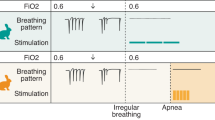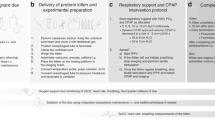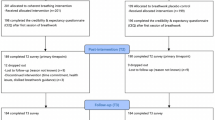Abstract
Summary: The effects of changing body posture on breathing frequency (f) of anesthetized newborn rats, rabbits, and dogs have been studied. No significant changes were observed between horizontal postures (supine, prone, left, and right lateral). In the vertical head-down position, most of the animals did not show any significant variation of f. Breathing rate dropped significantly in the head-up position, and in all the animals, it was still below the horizontal value 1 min after the vertical head-up tilting. After bilateral vagotomy, no significant change with body posture occurred. In unanesthetized newborns, the +45± head-up tilting only occasionally caused a drop of f and to a lesser extent than after anesthesia. By comparing these results with those reported in adults, it is concluded that the postural effects of f are less evident in the newborn than in the adult. Even if a quantitative difference in the mechanical events after the change in body posture is the most likely explanation of the lower sensitivity of the newborn, other nonmechanical factors could also be involved.
Speculation: The postural effects on breathing rate of newborn rats, rabbits, and dogs are less evident than in the corresponding adults- The quantitative difference in the mechanical events after the postural change is the most likely explanation, but less vagal input or reflex elaboration of the vagal afferents in the newborn is also possible.
Similar content being viewed by others
Log in or create a free account to read this content
Gain free access to this article, as well as selected content from this journal and more on nature.com
or
Author information
Authors and Affiliations
Rights and permissions
About this article
Cite this article
Mortola, J. Body Posture and Breathing Frequency in Newborn Mammals. Pediatr Res 14, 1403–1407 (1980). https://doi.org/10.1203/00006450-198012000-00030
Issue date:
DOI: https://doi.org/10.1203/00006450-198012000-00030



